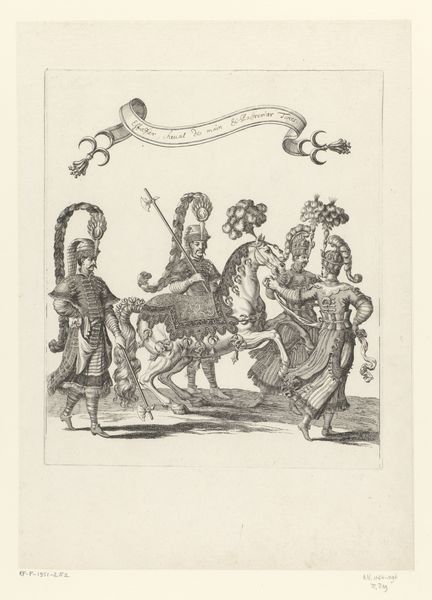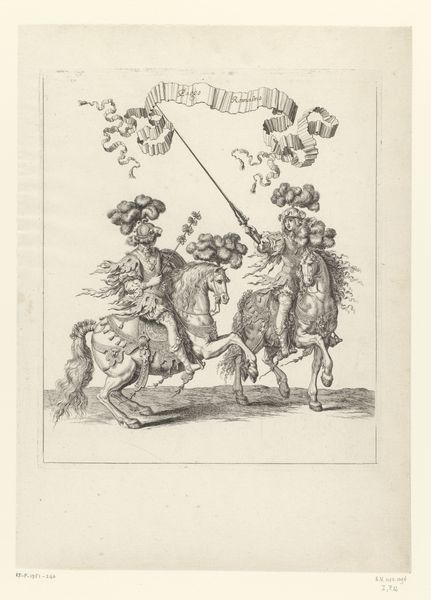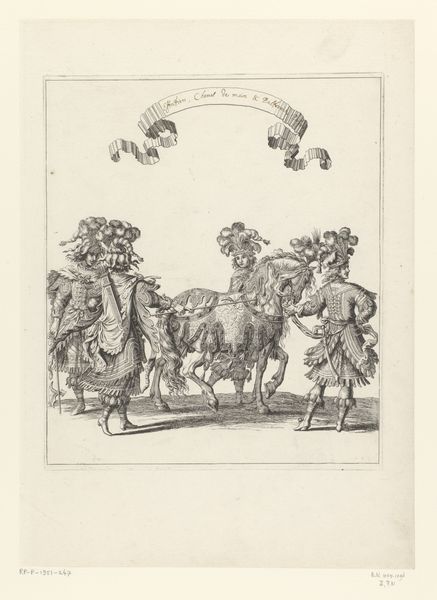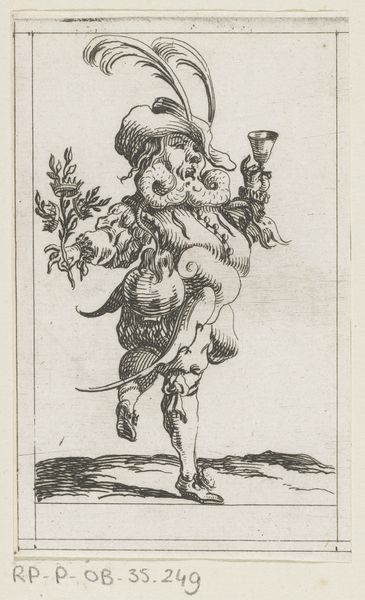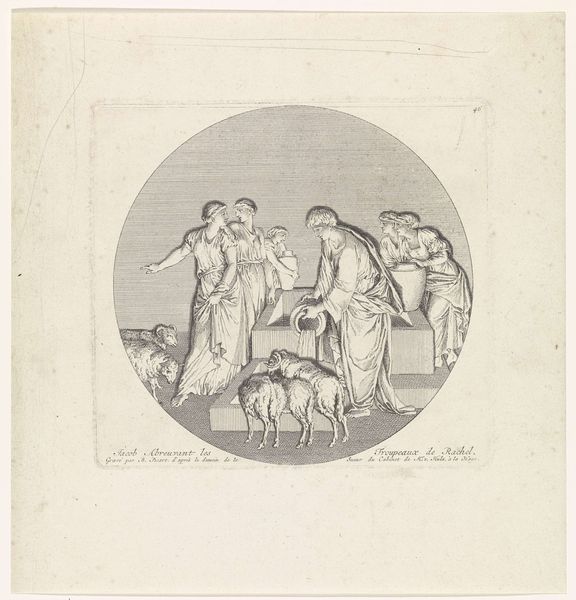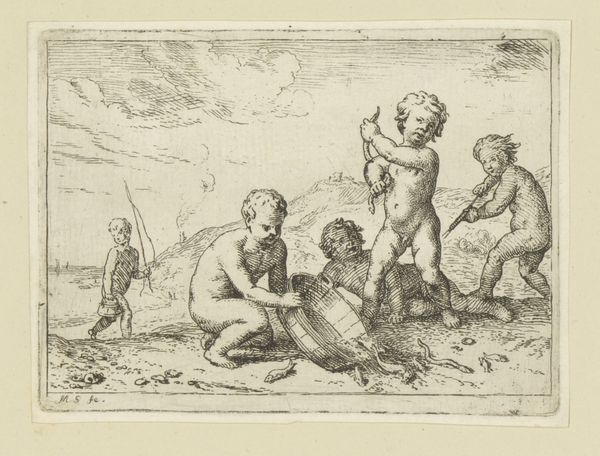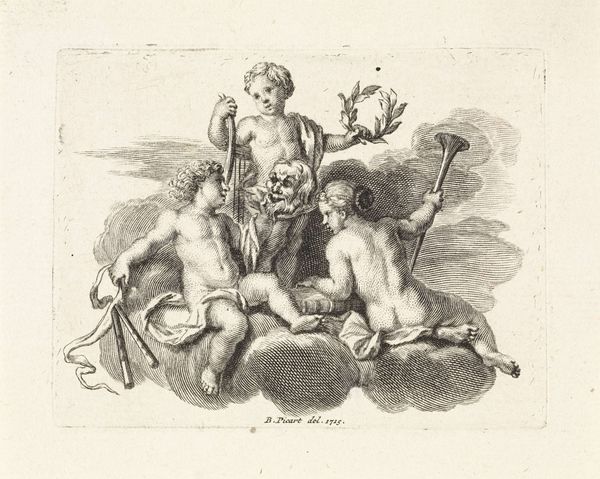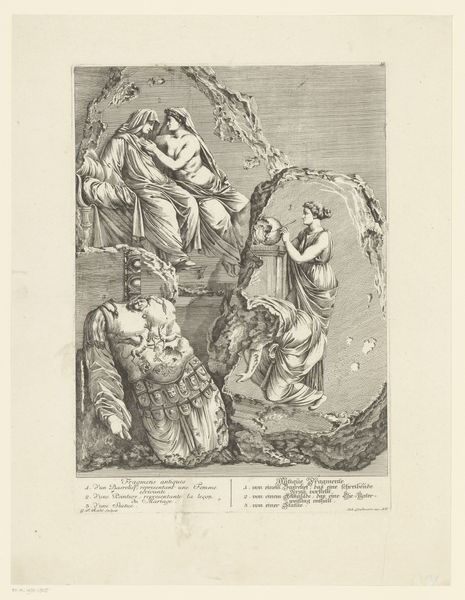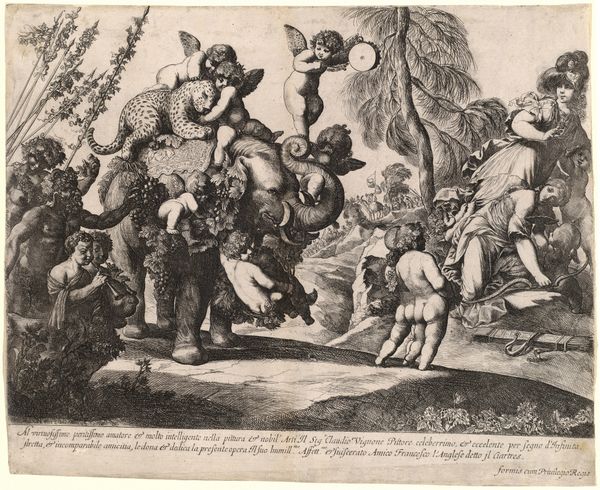
Twee Afrikaanse mannen, elk met een aap op hun schouders en een beer aan een ketting 1670
0:00
0:00
francoischauveau
Rijksmuseum
print, etching, engraving
#
narrative-art
#
baroque
# print
#
etching
#
figuration
#
genre-painting
#
history-painting
#
engraving
Dimensions: height 314 mm, width 262 mm
Copyright: Rijks Museum: Open Domain
Editor: Here we have "Two African Men, each with a monkey on their shoulders and a bear on a chain," an etching by François Chauveau, from around 1670. The imagery is...jarring, to say the least. It’s a really strange parade. What am I missing here? How do you interpret this work? Curator: Oh, my dear, where to even begin with this fascinating and deeply troubling piece! Chauveau invites us into a world where the boundaries between human and animal, power and subjugation, are intentionally blurred. Have you noticed how the figures are positioned? It feels almost theatrical, wouldn’t you say? A carefully staged performance of colonial-era power dynamics? Editor: It does feel very performative! The animals are dressed and in chains; it’s…humiliating. I’m struck by how casually cruel it feels. Curator: Precisely! The “casual” aspect is key, isn't it? Think of it as a mirror reflecting the accepted norms of the time—a reflection we now recognize as deeply flawed. These images served as both documentation and reinforcement of a worldview steeped in exploitation. Does it strike you as celebratory or cautionary? Or maybe even… both? Editor: That’s complicated, isn't it? It is disturbing but feels normal to those portrayed at the time. I now see that a singular view won't cover it! Curator: Art like this truly unlocks historical complexities, doesn't it? We wrestle with it, allowing it to reshape us. The discomfort is where the learning begins! It is a testament to the artist's technical skill, which highlights such sensitive yet necessary issues for conversation.
Comments
No comments
Be the first to comment and join the conversation on the ultimate creative platform.
